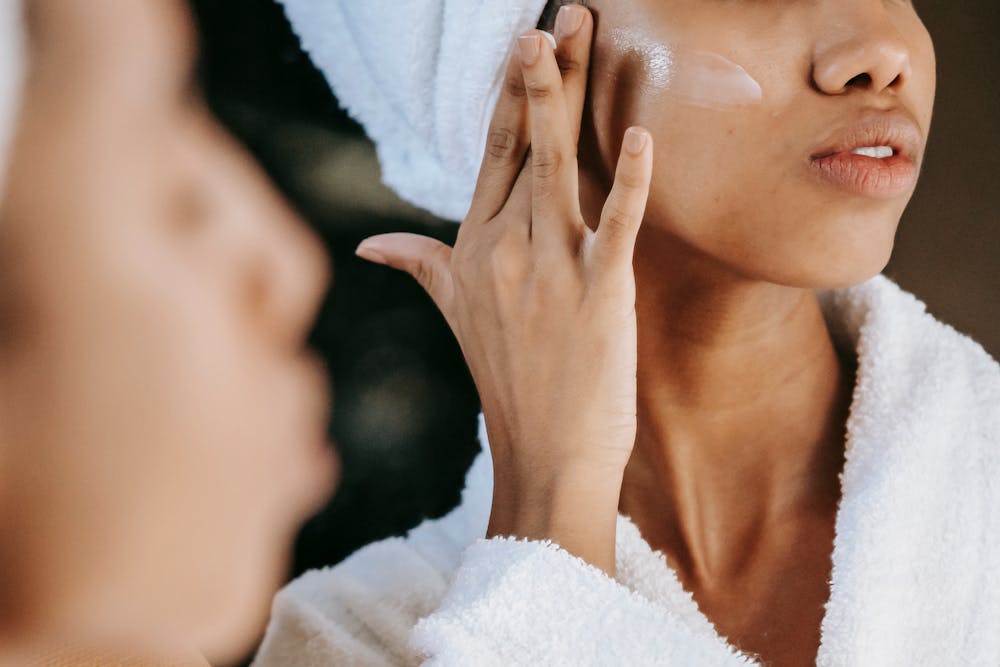Excess sebum - why it occurs and how you can fight it
Posted by NADEJDA ALIOHINA


Sebum secretion is a perfectly normal process that takes place in the skin and has many benefits. However, it becomes a problem when sebum is secreted in excess. It can give birth to acne and give your skin a shiny and unpleasant appearance. Fortunately, there are methods by which sebum secretion can be regulated, and the skin will look cleaner and full of freshness. In the article below, you will find out why excess sebum can appear and how to combat this problem.
What produces excess sebum - what is sebum?
On almost the entire surface of the body, there are sebaceous glands, responsible for sebum secretion. This is an oily, yellowish substance and has the role of preventing the loss of water from the skin, to limit its drying. The highest concentrations of sebaceous glands are found on the face, scalp and chest.
The chemical composition of sebum includes fatty acids, triglycerides, and squalene. Through fat molecules, it fulfills its role as a protective skin barrier: it seals moisture, offers protection against ultraviolet radiation and other harmful agents, such as fungal infections. In addition, it is responsible for bringing soluble antioxidants to the surface of the skin (for example, vitamin E).
Why does excess sebum occur?
As it appears from the previous chapter, sebum secretion is not a negative process, but it becomes problematic when the skin secretes excess sebum. The amount of sebum is influenced by the hormonal changes that occur in the human body. These changes are caused by aging, drug treatments or lifestyle.
When sebum is produced in excess, it can block the pores, in combination with dead skin cells, and thus pimples and blackheads appear. Also, oily skin caused by excess sebum shows enlarged pores and a shiny appearance.
Once the pores are blocked by the sebum "plug", the bacteria trapped there can cause inflammation, and over time the content can also reach the other layers of the skin, causing injuries.
How do you regulate excess sebum?
There are several methods by which you can keep sebum secretion under control and they refer to both the diet and the skin care routine.
First of all, it is necessary to have a healthy diet, in which you eliminate fast food, foods rich in fats and those rich in sugar.
Also, although it seems counterintuitive, you have to be careful not to dry your skin excessively, then you want to remove the sebum. Therefore, give up care products that contain alcohol, use face creams and gentle cleaning products , such as deep cleansing foams . To purify the skin, you can use cleansing masks with clay or other substances that remove sebum in a friendly way.
If you apply intensive cleaning methods to the skin, it will tend to overcompose and produce even more sebum. Therefore, do not rub the skin with abrasive materials and do not excessively dry it. Make sure you maintain an appropriate level of hydration.
You can also use products specially created for oily skin, such as certain serums containing salicylic acid (BHA), which unclog pores without drying the skin. Don't forget that, if you use these products, apply sunscreen.

Also to maintain the chemical balance of the skin, use make-up products without oils or butters. They must help you keep your skin matte.
Sometimes, excess sebum can lead to problems that require medical consultation, so do not hesitate to consult a specialist if acne or other complications persist. It is possible for the doctor to discover causes that require special treatment.
In general, excess sebum can be regulated through a consistent routine, applied with sanctity, through delicate but effective cleansing of the skin and through the use of products specially created for your skin type. Equally important are a healthy diet, which includes natural ingredients and optimal hydration, as well as a lifestyle without excesses and sufficient rest. Applying these methods, you will always have a healthy, fresh and clean complexion!
Photo source: Shutterstock.com.

